

| Spacecraft Galileo left Earth for Jupiter in 1989, launched by the Space Shuttle Atlantis. This began its six-year journey to Jupiter. | 
|
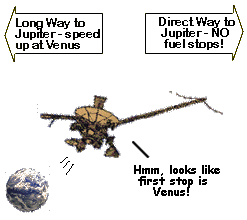 |
If Galileo flew straight to Jupiter, it would have gotten there in about half the time. But it also would have had to carry a lot of fuel, and that was expensive! |
| So Galileo's engineers at JPL sent the spacecraft to Venus, and then back past Earth, for "gravity assists" to speed Galileo up. | |
| Galileo used Venus' gravity and the speed of its orbit to get swung around toward Earth and go a little faster. | 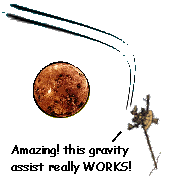 |
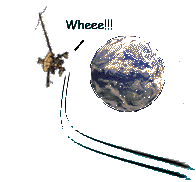 | Then Galileo came back to Earth and did the same thing again: it passed really close to Earth, and the Earth's gravity "grabbed" Galileo, and swung it past even faster. |
| On its way past Venus and Earth, Galileo took some cool pictures. It took so many of Earth, JPL made an Earth rotation movie! | 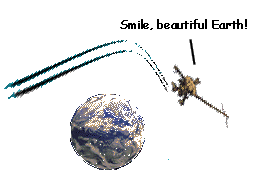 |
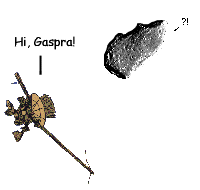 | Galileo then flew all the way to the Asteroid Belt, which is farther than Mars! The spacecraft took pictures of Gaspra, a little asteroid. No one had ever visited an asteroid before! |
| Spacecraft Galileo then came back to Earth for one more gravity assist. | 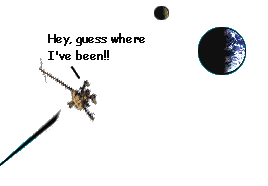 |
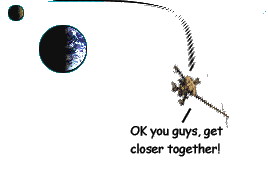
| While flying away, Galileo looked back at Earth for the last time, and took pictures of Earth and the moon together. This not only made a good postcard, but Galileo again took enough to make a movie of the moon orbiting the Earth, another first! |
| Galileo was now going fast enough to fly all the way to Jupiter. But it could also visit another asteroid on the way, Ida. Galileo discovered that Ida had a moon! | 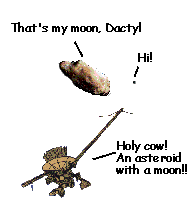 |
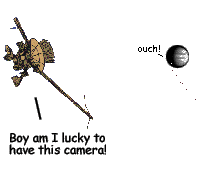 | While still about a year away, Galileo happened to see a comet hitting Jupiter! The comet was named Shoemaker-Levy 9, and it had broken up into 21 pieces. They all crashed into Jupiter and made big fireballs. |
| Then, five months before Jupiter arrival, the time came for Galileo's Probe to leave on its mission. It would dive into Jupiter's clouds and signal what it found back to Galileo, who would send it all to Earth. | 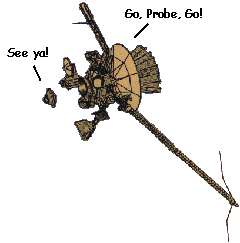 |

Galileo did have its share of problems, though, along the way. But Galileo's support crew at JPL solved just about all of them!
See Galileo's Greatest Challenge for the whole story on how Galileo almost thought its mission was over, when only halfway to Jupiter!